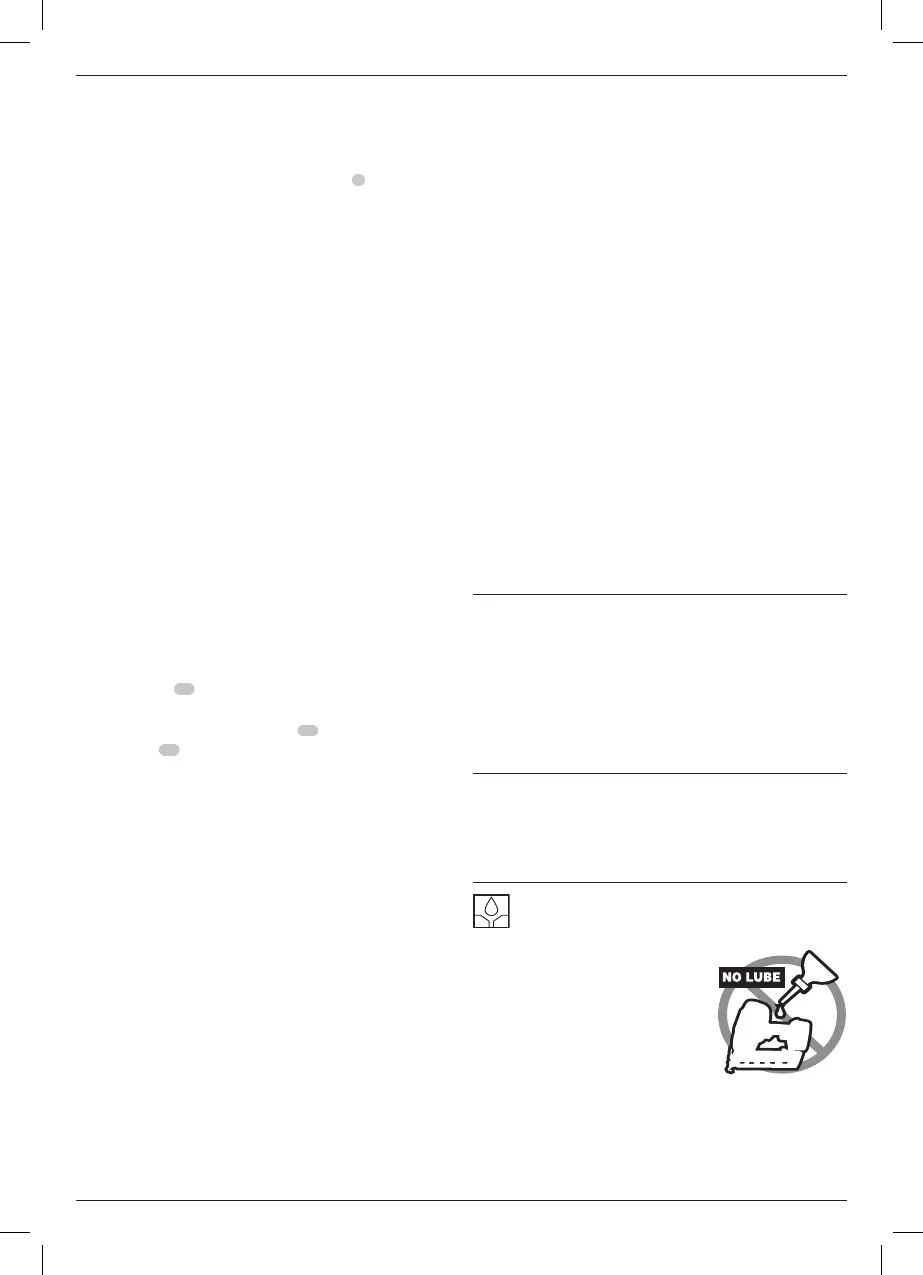15
ENGLISH
Stall Release (Fig. I)
If the nailer is used in harder material where all available energy
in the motor is used to drive a fastener, the tool may stall.
The driver will not complete the drive cycle and the jam/stall
indicator will flash. Rotate the stall release lever
8
on the tool
and the mechanism will release. NOTE: The tool will disable
itself and not reset until the battery pack has been removed
and reinserted. If the driver does not automatically return to
the home position, proceed to Clearing a Jammed Pin. If the
unit continues to stall please review the material and fastener
length to be sure that it is not too rigorous an application. The
nailer could also be overheated and needs time to cool before
further use.
Clearing a Jammed Pin (Fig. A, J)
WARNING: To reduce the risk of serious personal
injury, disconnect battery pack from tool before
making any adjustments, changing accessories,
servicing, or moving the tool. Such preventative safety
measures reduce the risk of starting the tool accidentally.
CAUTION: When removing a jammed pin, DO NOT
orient the nailer with the nose up or with the battery
foot up. Positioning the nailer this way makes the
jammed pin or pieces of the pin more likely to be ingested
into the nailer. If any portion of a pin is ingested into the
tool, the pin should be retrieved by removing the top cap.
If a pin becomes jammed in the nosepiece, keep the tool
pointed away from you and follow these instructions toclear:
1. Remove battery pack from tool and engage trigger lock-off.
2. After laying the tool on its side, slide the spring-loaded
pusher latch
15
to the base of the magazine to lock it into
place and unload pin strip.
3. Rotate the magazine release lever
14
and rotate the
magazine
12
forward.
4. Remove jammed/bent pin, using pliers if necessary. The
contact trip can be removed if necessary. Refer to Contact
Trip Replacement.
CAUTION: If any portion of a pin is ingested into the tool,
the pin should be retrieved by removing the topcap.
5. If the driver is in the down position, rotate the stall release
lever on the top of thenailer.
NOTE: If the driver will not reset after rotating the stall
release lever, manually resetting the blade with a long screw
driver may be necessary.
6. Rotate the magazine back into position under the nose of
the tool and close the magazine release lever.
7. Reinsert battery pack.
NOTE: The tool will disable itself and not reset until the
battery pack has been removed and reinserted.
8. Reinsert pins into magazine (refer to Loading the Tool).
9. Release the pusher latch.
10. Disengage the trigger lock-off when ready to
continuenailing.
NOTE: Should pins jam frequently or the driver continually fail
to reset, have tool serviced by an authorised
service
centre.
Cold Weather Operation
When operating tools at temperatures below freezing:
1. Keep tool as warm as possible prior to use.
2. Actuate the tool 10 or 15 times into scrap lumber before
using.
Hot Weather Operation
Tool should operate normally. However, keep tool out of direct
sunlight as excessive heat can deteriorate bumpers and other
rubber parts resulting in increased maintenance.
MAINTENANCE
Your
power tool has been designed to operate
over a long period of time with a minimum of maintenance.
Continuous satisfactory operation depends upon proper tool
care and regularcleaning.
WARNING: To reduce the risk of serious personal
injury, turn tool off and disconnect battery pack
before making any adjustments or removing/
installing attachments or accessories. An accidental
start-up can causeinjury.
The charger and battery pack are notserviceable.
DAILY MAINTENANCE CHART
ACTION Clean magazine, pusher, and contact trip
mechanism.
WHY Permits smooth operation of magazine, reduces
wear, and prevents jams.
HOW Blowing off the tool with compressed air is the
most effective way to clean the tool. The use
of oils, lubricants periodically or solvents is not
recommended as they tend to attract debris
and/or damage the plastic parts of the tool.
ACTION Before each use, check to ensure all screws and
fasteners are tight and undamaged.
WHY Prevents jams and premature failure of toolparts.
HOW Tighten loose screws using the appropriate hex
wrench or screwdriver.
Lubrication
NOTICE: NEVER spray or in
any other way apply lubricants
or cleaning solvents inside the
tool. This can seriously affect
the life and performance of
the tool.
tools are properly
lubricated at the factory and are ready for use. However, it is
recommended that, once a year, you take or send the tool to a
certified service centre for a thorough cleaning and inspection.
